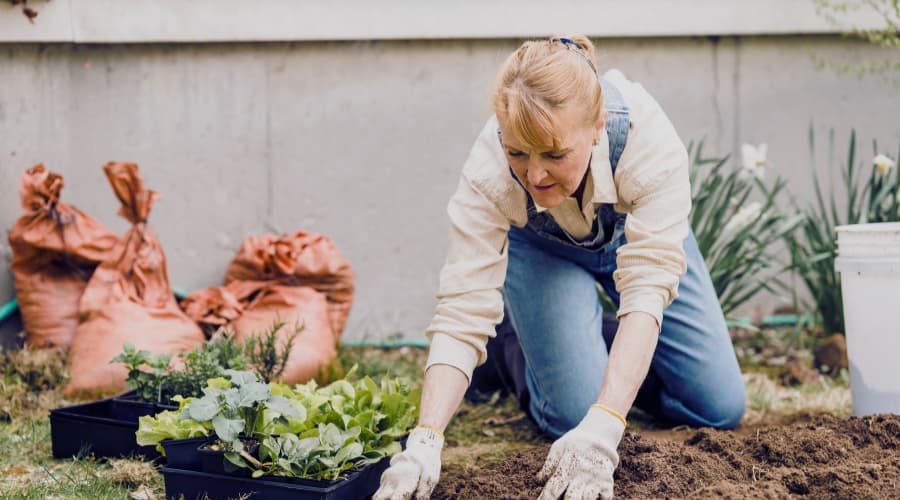Living with chronic pain is a nightmarish ordeal. Waking up in the morning only to immediately be greeted by pain somewhere in your body is enough to make you wish that the day would just be over with.
At times, the pain can be so debilitating that you may not even be able to get any work done as you are constantly distracted by it.
The pain you have to deal with on a daily basis can manifest itself in a variety of ways as well. It may not just be your muscles and joints that may be aching. Your pain could also involve migraines or issues that make it difficult for you to digest the food you eat.
Even if you are fortunate enough to be free from conditions that bring about physical pain, you may still be affected by mental maladies.
Life can be stressful at times. It can be overwhelming too.
Truthfully, the human experience is not complete without pain, but there comes a point when it becomes too much to bear.
Thankfully, we can do something to ease our pain. In search of relief for the pain you have to endure regularly, you can try out osteopathy.
Cranial osteopathy can also target issues you have, especially those affecting the area around your head and mind.
What Is Osteopathy?
Before we dive deep into how osteopathy – and cranial osteopathy in particular – can help you, let’s first discuss what it actually is.
According to the General Osteopathic Council, osteopathy accounts for both the diagnosis and treatment of a “wide range of medical conditions.”
The key point to remember when it comes to osteopathy is that it is based upon the principle that the health of an individual is largely influenced by the current condition of their bones, muscles, as well as the many connective fibres that hold all of those parts of the body together.
To be even more specific, osteopathy is focused on making sure that those aforementioned parts of your body are working in concert with one another. If they are, then that means that you are healthy and feeling good.
This is where the osteopath can come in and provide some valuable assistance.
Using different physical manipulation techniques, our osteopath will address the pain you may be feeling by bringing your body back to “a state of balance.” Examples of the physical manipulation techniques osteopaths may utilise include stretching different parts of your body as well as massage.
What makes osteopathy quite different from other pain relieving methods is that it blends together diagnosis and treatment during the same session. You don’t necessarily have to tell the osteopath which issues you need addressed.
The osteopaths will effectively diagnose you themselves by using their sense of touch to detect any areas on your body that require relief. Because of the way osteopaths work, they may even be able to find points on your body that are dealing with issues that you were previously unaware of.
Treatment usually does not end after the osteopath has worked on your body. They will often provide tips for how you can keep your body in good condition moving forward. Osteopaths may advise you to perform specific exercises and they may also encourage you to change your posture in certain ways.
Why Do People Have Osteopathic Treatment?
The main reason why people undergo osteopathic treatment is because they want their nagging aches and pains addressed. More often than not, they will address pain you may experience in your joints.
Osteopathy can be particularly helpful if you’re experiencing pain in areas you will find difficult to address on your own such as your back or your neck. The assistance provided by osteopaths may finally be able to help you get rid of pain you’ve been suffering from for years.
The work done by osteopaths may also prove very valuable if you’re still living with the lingering physical effects of injuries or accidents. Instead of living with your chronic pain, osteopathy may relieve it.
Notably, cranial osteopathy is a branch of this practice that specifically addresses the area around your head.
What Is Cranial Osteopathy?
Cranial osteopathy is simply a more targeted and “refined” form of osteopathy that involves “the structures inside the head,” according to the Sutherland Cranial College of Osteopathy.
Similar to how osteopaths work, cranial osteopaths will use their sense of touch to pinpoint certain areas on your body that are currently strained or may simply be damaged. Once they have identified those problem areas, the cranial osteopaths will then use the physical manipulation techniques to treat what may be ailing you.
There are likely people out there who are more apprehensive of trying out cranial osteopathy, and that sentiment is not difficult to understand.
Considering how delicate the different sections of the neck and head are, people may be hesitant to receive treatment there fearing that one wrong move could cause serious injury. Relative to other treatment methods though, cranial osteopathy is noticeably gentler on your body.
Can I Benefit from Cranial Osteopathy?
If you’ve undergone osteopathy before and found that it worked effectively on your body, you can also expect the cranial variant to leave a positive kind of lasting impact.
Choosing to undergo cranial osteopathy, you can expect it to address a wide range of physical ailments that you are currently struggling with.
If you’re currently experiencing some neck pain, the physical manipulation techniques employed by osteopaths should be able to minimise it to a degree or even eliminate it over the course of multiple treatment sessions.
Many people can endure headaches and still work like normal, but others are not quite as lucky. Migraines can be incredibly difficult for certain sufferers. They can even be termed as debilitating.
By trying out cranial osteopathy, you may be able to free yourself from the clutches of frequent headaches. Eventually, you will learn not to dread them and the potentially debilitating effects they can have on you.
Cranial osteopathy may also help with sleep issues and certain anxiety issues.
An important thing for you to remember when it comes to cranial osteopathy is that it will affect more than just the neck and head region of your body. Though the treatment is certainly focused on the upper parts of your body, you can still experience benefits elsewhere.
It is important to point out that it is by no means a cure-all for what may be ailing you. Cranial osteopathy can help significantly with pain relief and addressing certain persistent ailments, but it won’t take care of everything.
Can I Undergo a Cranial Osteopathy Session If I’m Pregnant?
Osteopathy is not necessarily a bad idea for pregnant women, but it’s always wise to err on the side of caution with matters that could affect you and your child.
Prior to scheduling a cranial osteopathy session, you should pay a visit to your general practitioner or your midwife to ask if the treatment is compatible with your body. You should also remember to check with your GP or midwife before each session. Just because you were approved early on for a cranial osteopathy early on into your pregnancy, that doesn’t mean you will receive approval again months later.
By the way, it’s not just the mother or the father who can potentially benefit from a cranial osteopathy session. Your children, even if they are still babies, can benefit from it as well.
What Issues Can Cranial Osteopathy Address in Babies?
Giving birth to a child is often a challenging experience for the mother. What many of us overlook though is that the process is not easy for the baby as well.
As pointed out by Chhabra Osteopathy, the baby’s head has to be contorted in a variety of ways prior to the birth itself. To make the birthing process easier, the soft bones contained within the head of the baby have to overlap one another. That has to happen so that the baby can make it through and the birthing process can be successful.
Because of all that contorting, the baby’s head may end up slightly misshapen. It may not even be something you notice because many of us understandably expect children to look different right after they are born.
If the shape of the baby’s head remains irregular for longer than it should, the child may experience discomfort. A misshapen head could be symptomatic of a skull that is being compressed at multiple points. The squeeze may not be strong to do any real damage to the skull, but it can certainly be enough to make your child feel uncomfortable.
Skull compression around your baby’s ears can lead to more significant problems down the line including frequent occurrences of infections.
It’s not just your child’s ears that may be at risk because their eyes too can be affected by a misshapen head. A compressed skull can lead to a condition known as strabismus emerging. The condition itself is not too bad, but it can lead to your child’s eyes appearing as though they are always squinting.
The misshapen head could also affect the jawline and nasal passage of the baby.
How Can My Baby Benefit from Cranial Osteopathy?
Remember that the purpose of osteopathy is to return the body to “a state of balance.” If your child has a slightly misshapen head as a result of the birthing process, returning it to its intended shape will be beneficial.
Instead of having to deal with potential dental and breathing problems later in life, you can make things easier for your child by having him/her undergo a cranial osteopathy session.
There’s one more potential problem in babies that cranial osteopathy can fix early on.
Why Should I Consider Cranial Osteopathy Treatment If My Baby Is Colicky?
According to Pampers, colic is the term used to describe “bouts of intense, loud, and inconsolable crying.” Colic-induced crying can last for a remarkably long time. If your baby has this particular condition, you can expect him/her to cry loudly for numerous hours every day over a prolonged period.
There’s a significant chance your baby may indeed end up with colic as well since one in every five babies experiences it.
Arguably the most frustrating part about dealing with colic is that no one’s really sure what even causes it. There are some who say that it may be from acid reflux, some extra gas in the tummy, or perhaps even just the baby becoming overstimulated.
Interestingly enough though, problems with the digestive system are also listed among the possible causes of colic. The Mayo Clinic also notes that colic could be caused by a migraine or even anxiety.
Once again, it helps to remember the things that cranial osteopathy can be helpful with in adults. It just so happens that digestive system problems, migraines, and anxiety are among them.
If your child is colicky, it could very well be worth your time to check if cranial osteopathy will work for him/her.
Should I Be Worried about any Side Effects Cranial Osteopathy May Have on My Baby?
As long as you get the go ahead from your baby’s doctor that cranial osteopathy is okay, you have nothing to worry about. The gentle nature of cranial osteopathy is highly unlikely to cause any injury to your baby.
Following a session of cranial osteopathy, there are some babies who may become slightly unsettled, but that issue will resolve itself within a day or two. Some babies may react even more positively to the treatment as they could sleep more soundly for the next few days. That benefit is going to help out the parents as well.
What Are the Things I Need to Remember About Cranial Osteopathy?
First off, whether you’re looking at treatment for you or your child, the number one thing you have to do is to consult with a doctor. Ask your doctor if cranial osteopathy is an advisable form of treatment for the issues you are currently facing. If you get approval, you can move to the next step of your search.
What you want to do next is ensure that the person you’ve chosen to provide treatment is actually called an osteopath. This is an important point. In the UK, only individuals who are registered with the General Osteopathic Council can be regarded as osteopaths.
If the supposed professional you’re looking at is offering services that sound similar to cranial osteopathy but does not possess that particular job title, you need to look elsewhere.
Osteopaths must renew their registration on an annual basis and upon doing so, they will be provided with a new license confirming that. They will only be able to renew their registrations if they are deemed to be of good health and character and if they have professional indemnity insurance. There are also additional requirements they need to meet in order to obtain their new license.
Osteopathy and cranial osteopathy may not be able to cure everything that ails you or your baby, but it can still help with a wide range of health problems. It’s certainly helpful enough that it’s worth trying out at least once just to see how it can work for you.
We all want to be pain-free on a regular basis. By undergoing cranial osteopathy, you may be able to make that a reality for yourself.
Related Articles
- Osteopathy FAQs
- Osteopathy During Pregnancy
- How to Manage Back Pain During Pregnancy
- Low Back Pain During Pregnancy
- Prevent the Pain In Parenthood




























